
Students build spring scales and learn about the concept of weight.
- Subject:
- Education
- Material Type:
- Lesson Plan
- Provider:
- TeachEngineering
- Provider Set:
- TeachEngineering
- Date Added:
- 10/14/2015

Students build spring scales and learn about the concept of weight.

This lesson introduces the ways that engineers study and harness the wind. Students will learn about the different kinds of winds and how to measure wind direction. In addition, students will learn how air pressure creates winds and how engineers build and test wind turbines to harness energy from wind.

This lesson plan asks students to read To Kill A Mockingbird carefully with an eye for all instances and manifestations of courage, but particularly those of moral courage.
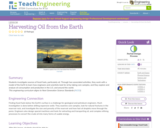
In this lesson, students investigate sources of fossil fuels, particularly oil. Students will learn how engineers and scientists look for oil by taking core samples from a model of the Earth. Also, students will explore and analyze oil consumption and production in the United States and around the world.
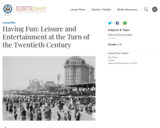
How did Americans "have fun" a century ago? In this lesson, students will learn how Americans spent their leisure time and explore new forms of entertainment that appeared at the turn of the century. In addition, they will learn how transportation and communication improvements made it possible for Americans to travel to new destinations.
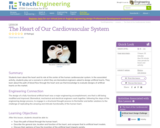
Students learn about the heart and its role at the center of the human cardiovascular system. In the associated activity, students play out a scenario in which they are biomedical engineers asked to design artificial hearts. They learn about the path of blood flow through the heart and use that knowledge to evaluate designs of artificial hearts on the market.
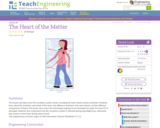
This lesson describes how the circulatory system works, including the heart, blood vessels and blood. Students learn about the chambers and valves of the heart, the difference between veins and arteries, and the different components of blood. This lesson also covers the technology engineers have developed to repair the heart if it is damaged. Students also understand how the circulatory system is affected during spaceflight (e.g., astronauts lose muscle in their heart during space travel).
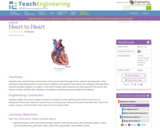
Students learn about the form and function of the human heart through lecture, research and dissection. They brainstorm ideas that pertain to various heart conditions and organize these ideas into categories that help them research possible solutions. An expert in the field of cardiac valve research was interviewed for this lesson and shares his ideas with the class. Students conclude by researching various possible heart defects.

Students learn the fundamental concepts of heat transfer and heat of reaction. This includes concepts such as physical chemistry, an equation for heat transfer, and a basic understanding of energy and heat transfer.
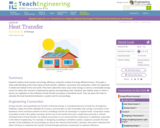
Students explore heat transfer and energy efficiency using the context of energy efficient houses. They gain a solid understanding of the three types of heat transfer: radiation, convection and conduction, which are explained in detail and related to the real world. They learn about the many ways solar energy is used as a renewable energy source to reduce the emission of greenhouse gasses and operating costs. Students also explore ways in which a device can capitalize on the methods of heat transfer to produce a beneficial result. They are given the tools to calculate the heat transferred between a system and its surroundings.
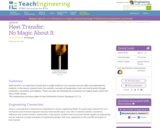
Heat transfer is an important concept that is a part of everyday life yet often misunderstood by students. In this lesson, students learn the scientific concepts of temperature, heat and the transfer of heat through conduction, convection and radiation. These scientific concepts are illustrated by comparison to magical spells used in the Harry Potter stories.
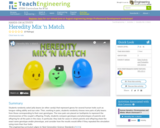
Students randomly select jelly beans (or other candy) that represent genes for several human traits such as tongue-rolling ability and eye color. Then, working in pairs (preferably of mixed gender), students randomly choose new pairs of jelly beans from those corresponding to their own genotypes. The new pairs are placed on toothpicks to represent the chromosomes of the couple's offspring. Finally, students compare genotypes and phenotypes of parents and offspring for all the "couples" in the class. In particular, they look to see if there are cases where parents and offspring share the exact same genotype and/or phenotype, and consider how the results would differ if they repeated the simulation using more than four traits.

If you have found yourself searching for, adapting or creating materials for your heritage classes because of a lack of readily available commercial resources, this site is for you!

Steganography is the science and art of hiding messages in plain sight so only the sender and intended recipient know the existence of a message. Steganography can be characterized as security through obscurity. Through this lesson, students experience a portion of the engineering design process as they research steganography and steganographic methods; identify problems, criteria and constraints; brainstorm possible solutions; and generate ideas. These are the critical first steps in the engineering design process, often overlooked by students who want to get to the "doing" phases—designing, building and testing. In computer science, a thorough design phase makes program implementation much easier and more effective. Students obtain practice with a portion of the design process that may be less exciting, but is just as important as the other steps in the process.
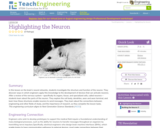
In this lesson on the brain's neural networks, students investigate the structure and function of the neuron. They discover ways in which engineers apply this knowledge to the development of devices that can activate neurons. After a review of the nervous system specifically its organs, tissue, and specialized cells, called neurons students learn about the parts of the neuron. They explore the cell body, dendrites, axon and axon terminal, and learn how these structures enable neurons to send messages. They learn about the connections between engineering and other fields of study, and the importance of research, as they complete the lesson tasks.
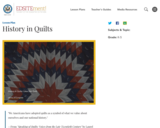
The lessons in this unit are designed to help your students recognize how people of different cultures and time periods have used cloth-based art forms (quilts) to pass down their traditions and history.

Students learn about some of the different climate zones in China and consider what would be appropriate design, construction and materials for houses in those areas. This prepares them to conduct the associated activity(ies) in which they design, build and test small model homes for three different climate zones.
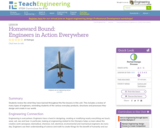
Students review the what they have learned throughout the five lessons in this unit. This includes a review of many types of engineers, reminding students of the various everyday products, structures and processes they design and create in our world.
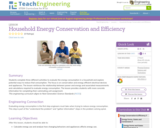
Students complete three different activities to evaluate the energy consumption in a household and explore potential ways to reduce that consumption. The focus is on conservation and energy efficient electrical devices and appliances. The lesson reinforces the relationship between power and energy and associated measurements and calculations required to evaluate energy consumption. The lesson provides the students with more concrete information for completing their culminating unit assignment.
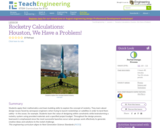
Students apply their mathematics and team building skills to explore the concept of rocketry. They learn about design issues faced by aerospace engineers when trying to launch rocketships or satellites in order to land them safely in the ocean, for example. Students learn the value of designing within constraints while brainstorming a rocketry system using provided materials and a specified project budget. Throughout the design process, teamwork is emphasized since the most successful launches occur when groups work effectively to generate creative ideas and solutions to the rocket challenge.